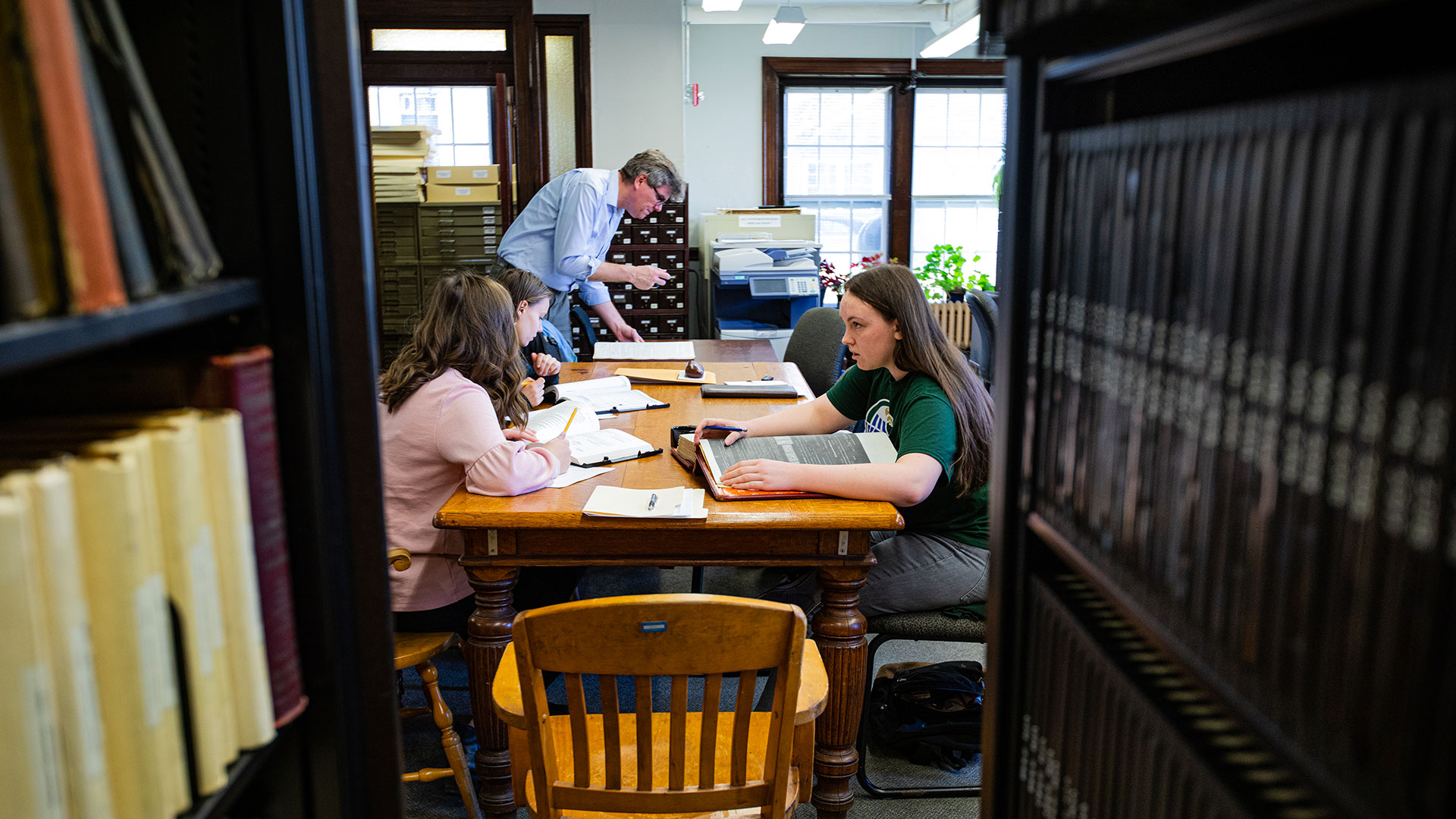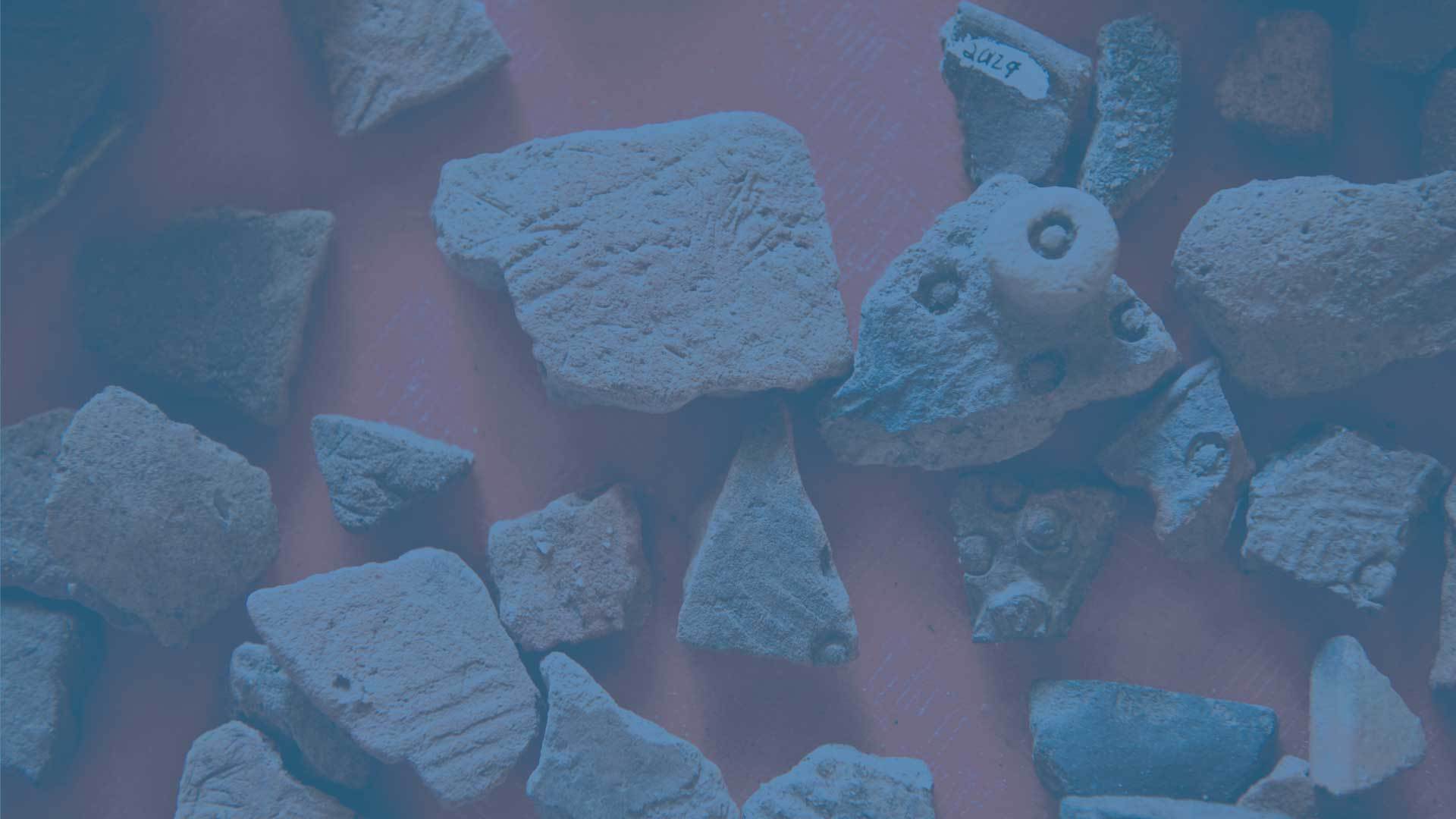
Cultural and Historic Preservation
The Noreen Stonor Drexel Cultural and Historic Preservation Program prepares students for careers that explore and protect the places, objects and stories that create our history. As one of only eight undergraduate programs recognized by the National Council for Preservation Education, Salve Regina University's curriculum provides a diverse foundation in the field's major disciplines, including architectural history, archaeology and museum studies.
Learn by Doing
Salve Regina's program emphasizes the cultural relationships between people, objects and buildings and teaches students to preserve the stories that give those material things meaning. Our unique curriculum provides students with a strong foundation in architectural history, archaeology and preservation planning. We also offer a double major with art history for those students planning for a career in the museum field.
Because we believe that experience is the best teacher, our students learn preservation by doing preservation, and we take full advantage of the world-class architecture and living laboratory that surrounds us. We employ the buildings and objects on our campus and in the city of Newport to help students develop valuable skill sets.
Through coursework and required internships, students photograph and create measured drawings of historic architecture, conduct archival research, participate in archaeological excavation and collaborate on the development of museum exhibits. We also train our students in cutting-edge preservation technology, including geographic information systems (GIS), photogrammetry, 3D digital modeling, aerial drone photography and archaeological geophysics (ground-penetrating radar, magnetic gradiometry and soil resistivity).
Program Spotlight: Diversity of Skill Sets
One of the things that sets our cultural and historic preservation program apart from others across the country is the diversity of skill sets. Our students work with the latest technology in archaeology and historic architecture. This makes them more competitive, and I know when students leave here, I can recommend them to some of the best cultural resource management firms in the nation with confidence.
Dr. Heather Rockwell, assistant professor

Our Faculty
Our faculty have extensive experience both teaching at the university level and working as preservation professionals, and they draw upon this knowledge to show students how their coursework translates to the real world of preservation. Small class sizes allow for individual attention and mentoring, and students are included in ongoing research projects. Using this experiential approach, our faculty provide students with valuable experience in the preservation field.
Life After Salve
Our students are uniquely positioned with the knowledge and experience they need for successful careers. As a result, we have an established record of placing our graduates in the nation’s leading preservation agencies, firms and organizations.
- Local and state government: An ever-increasing number of municipalities employ preservation planners, and every state has a historic preservation office.
- Federal government: A broad range of preservation work is available through the National Park Service.
- Private cultural resource management firms: These firms do contract work for clients ranging from private landowners to state governments, and also perform architecture documentation and evaluation.
- Private preservation organizations that maintain historic sites: There are hundreds - if not thousands - of local preservation organizations scattered across the country.
- Preservation contracting firms: Hands-on preservation work is a well-defined niche in the building industry, and there is a critical shortage of trained and skilled artisans in the historic building trades.
I am grateful to the cultural and historic preservation program for turning my fledgling interest in history into a career in historic preservation. The program surrounded me with people, places and experiences that fostered a passion for the field as well as a sense of academic rigor and community engagement that I apply every day on the job.
Alyssa Lozupone ’11, director of preservation, Newport Restoration Foundation
Major in Cultural and Historic Preservation (B.A.)
13 courses | 39 credits
Required courses:
- CHP170: Introduction to Historic Preservation
- CHP190: Introduction to Archaeology
- CHP218: Exploring North American Indigenous Cultures
- CHP263: Historic Site and Cultural Resource Management
- CHP301: American Architecture Survey
- CHP395: Senior Seminar
- CHP490: Senior Thesis
Students choose six additional courses from a list of electives focusing on archaeology, architectural history, art history and American history.
Two of the following:
- CEG222: Research Methods
- CHP223: World Archaeology
- CHP256: Internship in Archaeology and Cultural Resource Management
- CHP310: Introduction to Geographic Information Systems
- CHP331: Northeastern Archaeology
- CHP332: Archaeological Field School
- CHP335: Archaeological Lab Methods
- SOA130: Anthropology: Interpreting Cultural Differences
Two of the following:
- CHP180: Historic Building Documentation
- CHP207: Introduction to Architecture
- CHP255: Internship in Cultural and Historic Preservation
- CHP260: The City as a Work of Art
- CHP307: 20th and 21st Century Architecture
- CHP311: Landscape History and Interpretation
- CHP323: History of Newport Architecture
- CHP361: Field School in Historic Architecture
Two of the following:
- ART172: Art Across a Gilded Age Campus
- ART208: History of World Art I: Prehistoric to 1400
- ART209: History of World Art II: 1400 to Today
- ART312: Classical Art and Archaeology
- ART319: American Painting and Sculpture
- ART325: Wonder: Art, Nature, and Museums
- ART338: Art and the Gilded Age at Salve Regina University
- ART405: Curatorial Practice and the Gallery Experience
- CHP225: Introduction to Public History
- HIS313: American Immigrant Experience
- HIS316: American Economic History
- HIS322: Urban America
Minor in Cultural and Historic Preservation
Because of the linkages between historic preservation and so many other fields of study, our minor allows students focusing in disparate areas of study to enrich their major.
6 courses | 18 credits
Required courses:
- CHP170: Introduction to Historic Preservation
- CHP190: Introduction to Archaeology
- CHP263: Historic Site and Cultural Resource Management
- CHP301: American Architecture Survey
Students choose two additional courses from a list of electives in archaeology, architectural history and art history to give them a broad base of knowledge and skill sets in the field of cultural and historic preservation.